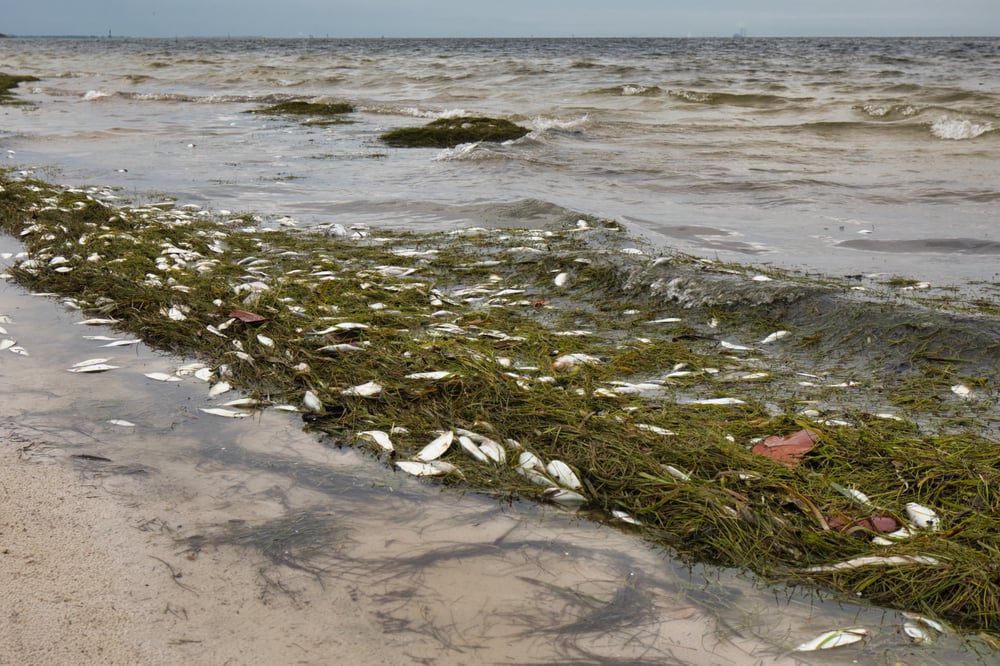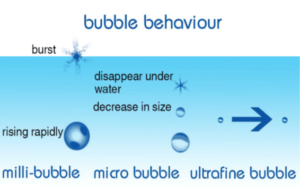Dave Tomasko doesn’t usually joke about red tide in Sarasota Bay, but he can’t help but smile about the so-called Magic Jet Ski that’s been permitted to patrol Sarasota Bay during the next red tide outbreak.
“While the name is something we embrace as being self-deprecating, the science and engineering behind the proposed activity are solid and promising,” said Tomasko, executive director of the Sarasota Bay Estuary Program (SBEP).
The technology behind the Magic Jet Ski is almost 50 years old, he explains. Ozone – an oxygen molecule with an extra oxygen atom – was shown in 1975 to kill red tide and destroy the toxin that kills fish and drives beachgoers away. The challenge has been scaling it from a lab setting to a management-relevant level.
“Researchers at Mote Marine Laboratory have found that adding ozone to water can reduce Karena brevis substantially with effectiveness varying based on ozone concentration,” he said. “The problem is – even if it does a great job but can only treat 100 gallons a day, it’s not going to be very useful.”
That’s why SBEP jumped at the opportunity to work with the global water treatment company Alarivean, Inc. to test their Magic Jet Ski in Sarasota Bay. “They approached us about this technology,” he said. “Their engineers had the right answers to all our questions. They knew that a Sea-Doo could push out 2,000 gallons of water per minute – a higher volume than the Deepwater Horizon oil spill was releasing. They also recognized that they needed an internal cooling system to handle seawater that is viscous with algae, and knew how to create nanobubbles that have a larger surface area and would stay underwater where they are most effective.”
Unlike some red tide mitigation efforts, the ozone would lose that extra atom almost immediately and revert to a standard oxygen molecule, so it would have no long-term effect on fish or benthos. “In any red tide situation, pretty much the only living thing is the red tide, so we don’t need to worry about any immediate side effects in the process of killing the red tide.”
SBEP helped Alarivean obtain a permit to test the technology in Sarasota Bay, with control and impact plots to determine the actual effect, probably in 5-acre sections. “That’s not a big area when you know that the current red tide off Sarasota is 300 square miles, and some have been 2,000 square miles, but it’s a big step up from a laboratory experiment.”
What is ozone?
Ozone is a colorless or pale blue gas that is created when an oxygen molecule contains an extra oxygen atom. It’s found in many situations on Earth, including:
- The ozone layer in the atmosphere, which protects the Earth from the sun’s harmful radiation
- Ozone created when lower-level air pollutants react in high temperatures to create a concentrated gas that can be harmful to people, plants and ecosystems
- Ozone in thunderstorms is created when lightning disrupts normal oxygen molecules. It’s what you smell to tell when rain is coming.
The tests will begin when the Florida Fish and Wildlife Conservation Commission has identified areas within Sarasota Bay with counts of more than 100,000 cells per liter for more than a month. The permit will last five years.
Along with ozone created naturally, a fourth form of ozone is manufactured as a disinfectant that’s used in a variety of circumstances, including water treatment facilities. It’s toxic in high concentrations and breaks down so quickly that it must be manufactured onsite. It works when its extra atom detaches from the oxygen molecule and attaches to bacteria, viruses and other microorganisms, breaking down their cellular structure.
The proposed technique for the Magic Jet Ski involves adding liquid oxygen to a stream of water being discharged at rates of 1,000 to 2,000 gallons per minute. Approximately 10% of the oxygen (O2) would be converted into ozone (O3) by running the discharge across an electrical grid. The discharge would then be channeled across a surface with a roughened texture to create nanobubbles (bubbles smaller than 100 nanometers in size) through shear force. These nanobubbles would be small enough to stay in the water column by being neutrally buoyant and would be expected to widely disperse into the water column via their negative electrical charges. Gas exchange would be enhanced by the high surface area to volume ratio of these very small bubbles.
Scientists expect that the ozone nanobubbles will kill the red tide algae they interact with. Laboratory studies also indicate that the toxins they create would be destroyed. Researchers expect minimal impact on other living resources because the ozone will dissipate so quickly,
“I hope we never get a chance to test it, but it’s silly not to expect another red tide in the next five years,” Tomasko said. “And we know it’s a band-aid, but sometimes a band-aid is what you need. If we could set up the Magic Jet Skis to patrol Venice Inlet when a red tide was predicted to enter the bay, it could make an enormous difference.”
While hopeful that the Magic Jet Ski will work, Tomasko also stressed that any results will be shared publicly. “Our involvement was contingent upon them agreeing to that stipulation.”
And the long-term focus on preventing red tide needs to remain on nutrient reductions, particularly from Lake Okeechobee and the Caloosahatchee River, which are directly linked to red tides, Tomasko said. “The Army Corps (of Engineers) has rebuilt the dyke around Lake Okeechobee for the first time since the 1920s so it can hold more water, and the Everglades Agricultural Area will have a 10,000-acre reservoir to clean water before it overflows to the south. They’re talking about a 60%-plus reduction in nutrients from that system, so red tide should be less likely to happen.”

